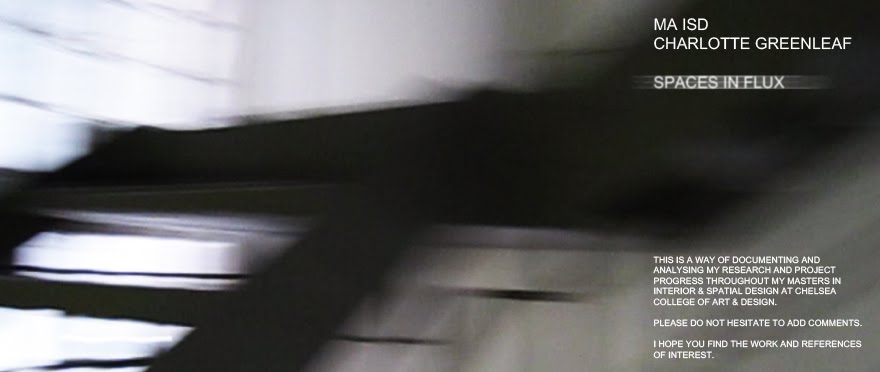The final filming mechanism which I have decided upon involves a series of complex rotating movements. The engineering of this device is going to be a challenge, but I am adamant to put it into action.
The design involves three triangular shaped elements (see drawing below), the top element is attached to a number of wires which are unwound from a pulley above (cantilevered from the stair). As the wires are unwound, the device descends through the space. Attached to this top element is another triangular shaped element below which rotates, and attached to this element is another element which also rotates at a different speed. A camera is attached to this bottom element and thus films the space as it descend along a random spiralling path around the void. There is a possibility to include a fixture which allows the camera to be positioned at different tilted angles, ie. so that the camera could be positioned looking upwards, downwards or horizontally.
The rotating/spiralling movements are in keeping with the spiral staircase and the idea of two rotating elements, which move at different speeds relates to the two lighthouses - Hurst Point and the Needles - each has a different light characteristic and in many lighthouses this is caused by the lenses rotating at different speeds. These two complex rotations combined allow the viewer (of the resulting film) to be transported down the spiralling staircase along a random path which thus zooms into and away from the staircase.

3D view

Plan of mechanism rotations (& camera field of view)

Elevation of mechanism
These complex movements are a tricky engineering challenge to solve, there are four key areas - balance, smooth rotation, two rotational speeds and rotational power.
- Balance
The weighting and rotation of the elements means that each element will need to be counterweighted to ensure balance across its three points. ie. the lowest element will need to be counterweighted at the other two points to balance for the weight of the camera. The middle element then needs to be counterweighted at the other two points to balance for the weight of the lowest element. Therefore there is a tricky task in ensuring that the device is kept as light as possible.
- Smooth Rotation
The elements need to rotate smoothly to ensure that the camera footage captured is not susceptible to bumps and jerkiness. This should be achieved through the use of bearings at each of the rotational points. Ideally bearings would be fixed below and above the triangular element. The trouble here is finding lightweight bearings, as these bearings often have cast iron casing.
- Two Rotational Speeds & Rotational Power
Each of the rotating triangular elements need to rotate at different speeds, this could possibly be achieved by the use of two different wheels of different sizes, with a belt linking them. They could both be powered by a single motor which could be mounted on the stable top element. This could if possible be battery powered, but if not it could be mains powered.
Filming mechanism detail elevation

Filming mechanism plan with belt detail
I am starting to make the device to try to solve all the possible problems and understand its movement and imposing forces. If I do manage to achieve this, below is a sketch of a possible way of installing the device, with a battery powered projector mounted on the duplicated device. Referring again to the two lighthouses across the water from each other. Between the camera and projector is a red sector which refers to the red sector within a lantern room of a lighthouse - notifying ships of danger. This is the in between point of the two devices, where camera meets projector and the feedback loop would get confused. In this installation I would however project the film captured within the lighthouse (if I am unable to film inside the lighthouse I would film inside the fire exit stairwell previously used).


















